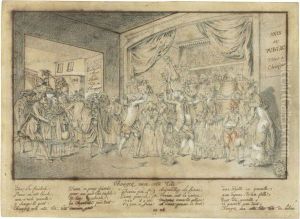Pierre Charles Duvivier Paintings
Pierre Charles Duvivier was a French artist and medalist born in 1696. He was part of the Duvivier family, which included several notable artists and medalists of the time. His father, Jean Duvivier, was also a celebrated medalist, from whom Pierre Charles likely received his initial training and artistic influence.
Duvivier's works are characterized by their intricate detail and classical style, which was typical of the medallists in the 18th century. He was particularly adept at capturing the likeness and character of his subjects, which were often prominent figures of his time. Throughout his career, Duvivier created medals commemorating various important events and personages, contributing to the rich tradition of French medallic art during the reign of Louis XV.
He served as the Graveur général des monnaies, which translates to 'Engraver-General of the Currency,' a prestigious position that had him overseeing the design and production of coinage and medals in France. This role not only demonstrated his artistic skill but also his ability to manage a significant aspect of the country's minting process.
Despite the prominence of his work and the significance of his role, many details of Duvivier's life remain less documented than those of some of his contemporaries. This is partly due to the sheer number of artists and craftsmen during the period, many of whom have been overshadowed by the most famous names of their time. Nonetheless, Duvivier's contributions to the art of medal-making are well regarded among historians and collectors.
Pierre Charles Duvivier continued to produce medals until his death in 1771. His legacy is preserved in the collections of various numismatic museums and through the medals that survive him. These pieces not only serve as artistic achievements but also as historical documents that offer insight into the cultural and political milieu of 18th-century France.

